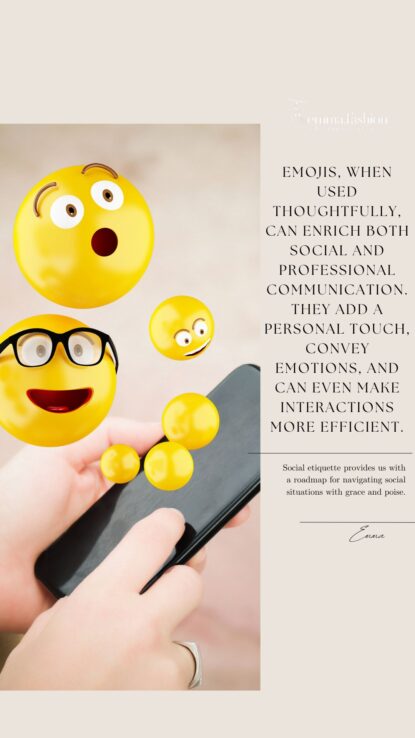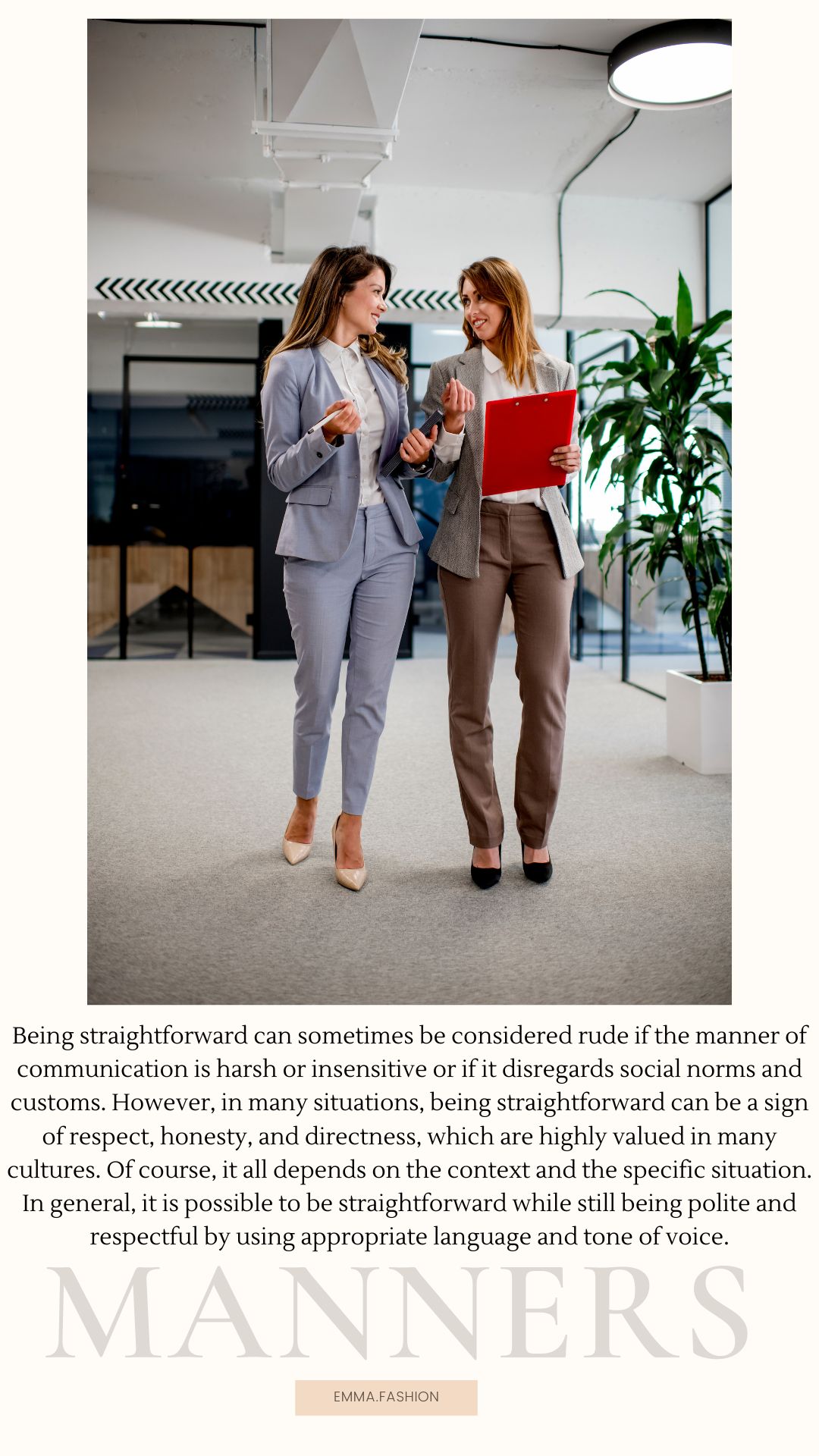Mastering Emoji Etiquette: Navigating Social and Professional Communication
In the age of digital communication, emojis have become a universal language, bridging gaps and adding a layer of expression to our text-based conversations. However, like any language, using emojis requires understanding the nuances and context to ensure they enhance rather than detract from your message. Here’s how to navigate the use of emojis in both social and professional settings with the proper manners and etiquette.
Emojis in Social Communication
Express Emotion, Don’t Overdo It
Emojis are perfect for expressing emotions and adding a personal touch to your messages. A well-placed smiley face 😊 can convey friendliness, while a heart ❤️ can show affection. However, using too many emojis can clutter your message and make it hard to read. Aim for balance to keep your communication clear and engaging.
Know Your Audience
Different groups may interpret emojis differently. What’s playful for one group might be confusing or inappropriate for another. When messaging friends, you have more freedom to be playful and creative. For example, using the party popper emoji 🎉 for celebrations or the laughing emoji 😂 for jokes. Be mindful of the shared context and inside jokes you have with different friends to use emojis effectively.
Stay Updated with Trends
Emojis evolve, and their meanings can change over time. Staying updated with current trends can help you use emojis correctly. For example, the face with tears of joy emoji 😂 has been a staple for laughter but has been partially replaced by the skull emoji 💀 or the crying emoji 😭 to indicate extreme amusement in younger demographics.
Emojis in Professional Communication
Use Sparingly
In professional settings, less is more when it comes to emojis. They can help convey tone and friendliness in a quick message but should be used sparingly. A single thumbs-up 👍 or a smiley 😊 can go a long way in softening the tone of your emails or messages without undermining your professionalism.
Understand the Culture
Every workplace has its culture and level of formality. Observe how your colleagues and superiors use emojis (if at all) and mirror that style. In some industries, emojis might be completely acceptable, while in others, they might be frowned upon. Always err on the side of caution until you understand the norms.
Avoid Ambiguous Emojis
Professional communication should be clear and unambiguous. Avoid emojis that could be misinterpreted or are too casual, like the winking face 😉 or the face with tongue 😛. Stick to straightforward and universally understood emojis that convey positivity and clarity, such as the checkmark ✅ or the light bulb 💡 for ideas.
Enhance, Don’t Replace Words
Emojis should complement your words, not replace them. Use them to add a touch of warmth or to reinforce your message. For example, ending a successful project email with “Great job, team! 😊” can convey appreciation and positivity. Avoid using emojis in place of important information or instructions.
Be Mindful of Timing
In professional settings, the timing of emoji use can also matter. In serious or urgent communications, emojis can seem out of place or tone-deaf. Reserve them for more casual exchanges or when celebrating successes and milestones.

General Tips for Emoji Etiquette
- Know Your Emojis:
Make sure you understand the meaning of the emojis you use. Some emojis have dual or evolving meanings, and using them incorrectly can lead to misunderstandings. For example, the eggplant 🍆 and peach 🍑 emojis have innocent meanings but are also often used as suggestive symbols.
2. Cultural Sensitivity:
Emojis can have different meanings in different cultures. Be aware of these variations, especially in international communications. For instance, the thumbs-up 👍 is a positive gesture in many cultures but can be offensive in others.
3. Emojis and Tone:
Emojis can help set the tone of your message, making it friendlier and more approachable. However, always consider the context. A formal announcement or a serious discussion might not be the best place for emojis.
4. Accessibility Considerations:
Remember that not all devices display emojis the same way, and some users might use screen readers that don’t interpret emojis well. Ensure your core message is clear even without the emojis.
Emojis, when used thoughtfully, can enrich both social and professional communication. They add a personal touch, convey emotions, and can even make interactions more efficient. By understanding the context, being mindful of the audience, and following basic etiquette, you can navigate the emoji landscape with confidence and finesse. Remember, good manners and appropriate use are key to making the most out of this modern communication tool.





Comments